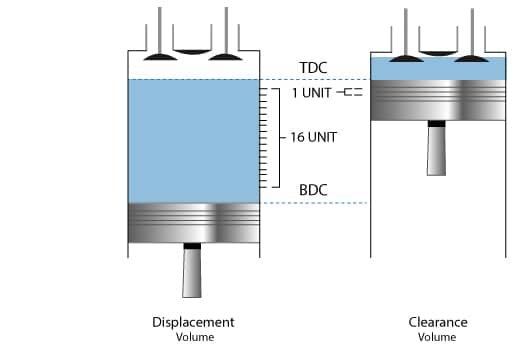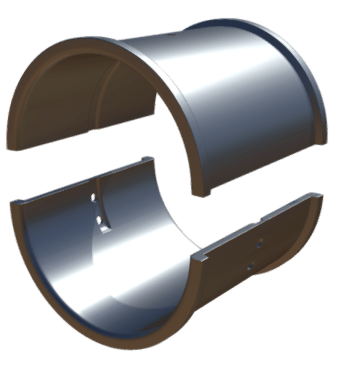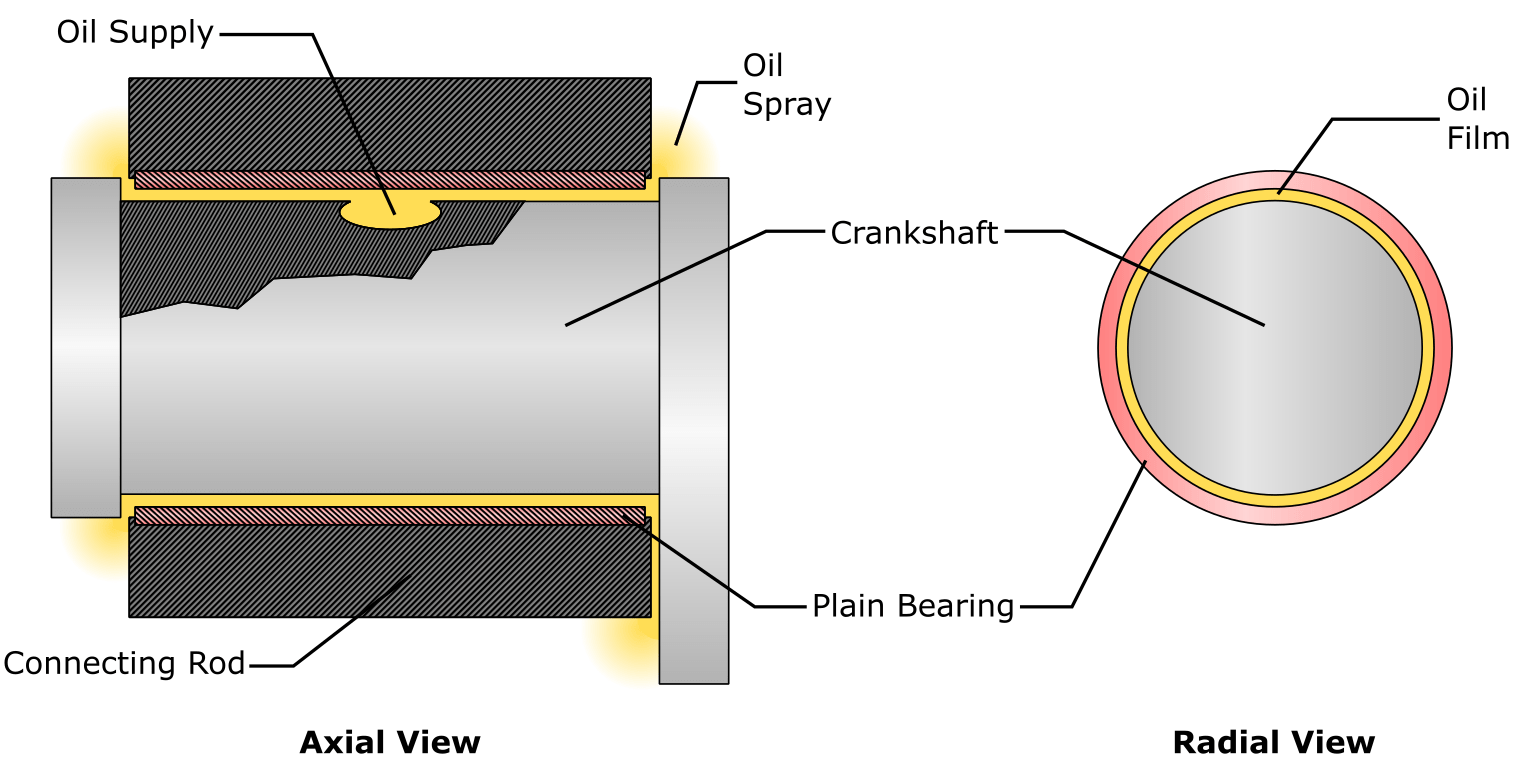What is an engine crankshaft?
The crankshaft (sometimes spelt 'crank shaft') transforms the linear motion of the pistons into a rotational motion that is transmitted to the load. A crankshaft has three main functions:
- To convert the reciprocating motion of the pistons into rotational motion.
- To transmit the power of an engine to the load.
- To balance the forces acting on the engine.

Crankshaft Parts
Crankshafts are usually manufactured from forged steel. The forged crankshaft is machined to produce the crankshaft bearing and connecting rod bearing surfaces. The rod bearings are eccentric, or offset, from the centre of the crankshaft. This offset converts the reciprocating (up and down) motion of the piston into the rotary motion of the crankshaft. The amount of offset determines the stroke (distance the piston travels from bottom dead centre (BDC) to top dead centre (TDC)) of the engine.

TDC and BDC Indicated
The crankshaft does not ride directly on the cast iron block crankshaft supports, but rides on special bearing material. The connecting rods also have bearings inserted between the crankshaft and the connecting rods. The bearing material is a soft alloy of metals that provides a replaceable wear surface and prevents galling between two similar metals i.e. between the crankshaft and connecting rod. Each bearing is split into halves to allow assembly of the engine. The crankshaft is drilled with oil passages that allow the engine to feed oil to each of the crankshaft bearings and connection rod bearings and up into the connecting rod itself.

The crankshaft has large weights, called counterweights (crank webs), that balance the weight of the connecting rods. These weights ensure an even (balance) force during the rotation of the moving parts.

Crankshaft and Bearing Lubrication
Tip 1: Crankshaft counterweights are also referred to as the crank webs.
Tip 2: Single piece bearings and bearings split into multiple parts, are known as plain bearings (journal bearings).
Tip 3: Soft metal bearings have a shiny white/grey appearance and are sometimes referred to as white metal bearings, or, Babbitt bearings (Babbitt was the inventor of the soft alloy).
Related Online Engineering Courses
Internal Combustion Engine Basics
Diesel Engine Fundamentals (Part 1)
Diesel Engine Fundamentals (Part 2)
